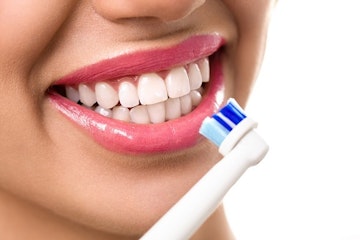Decalcification of the Teeth: What You Need to Know

Decalcification of the teeth is essentially the loss of calcium, which can be a problem if this leads to decay.
Usually appearing as white marks on the surface of teeth, decalcification in older children and adults can often be the result of plaque sticking to the tooth over a prolonged period of time.
Often this is seen as a result of orthodontic treatment where teeth have not been cleaned thoroughly enough when braces are in place.
It could also occur as a result of poor dental hygiene where plaque is allowed to build up through inadequate brushing.
In younger children decalcification in baby teeth very often occurs developmentally, usually while the baby is still in the womb. There is nothing parents can do to prevent this and the best option is to manage the condition carefully.

How do you manage decalcification?
The problem with decalcification is that it can leave teeth brittle. It means that teeth are more susceptible to decay and developing cavities, but in some cases it can make a tooth very vulnerable and can lead to it crumbling.
The best way to manage decalcification is to maintain excellent hygiene standards by brushing and flossing teeth thoroughly and ensuring that affected teeth are kept clean and free from plaque.
Unfortunately the effect of decalcification on young teeth can at times result in the need for extractions but only in serious cases.
Following your dentist’s advice and avoiding eating too many sugary foods, which can further weaken enamel, will help to protect vulnerable teeth.

Can decalcification be treated?
There is no magic cure-all but the body’s natural resources will help the tooth to recover from decalcification as saliva acts to remineralise the tooth following the removal of plaque.
This will still leave marks on the tooth but will help to protect the outer layer.
In young children dentists will paint on a fluoride varnish on teeth at high risk of developing decay to further help to protect those suffering from decalcification.
Make sure that your teeth stay protected with regular dental visits and if you have any concerns, speak to a member of the team who will be able to provide suitable advice and treatment options.
Contact Bhandal Dental Practice to make your next appointment.
Call us now to make an appointment

Keep reading...
How A Smile Makeover Can Increase Your Confidence
When patients want to achieve a dramatic transformation, we often recommend a smile makeover. This bespoke treatment plan can mean…
What is SmileFast?
SmileFast is a new dental treatment plan that allows you to achieve a dramatic smile transformation in as little time…
Anti-wrinkle injections - All you need FAQ's
The most common cosmetic treatment in the world now is anti-wrinkle injections. It's a simple and effective technique that involves…
What are Veneers?
Veneers are thin coats fitting over the teeth, protecting them from damage and creating a lovely smile. The tooth-coloured shells…

Hear from our
happy patients
These are just some of the kind words about our practice, direct from our incredible patients.









